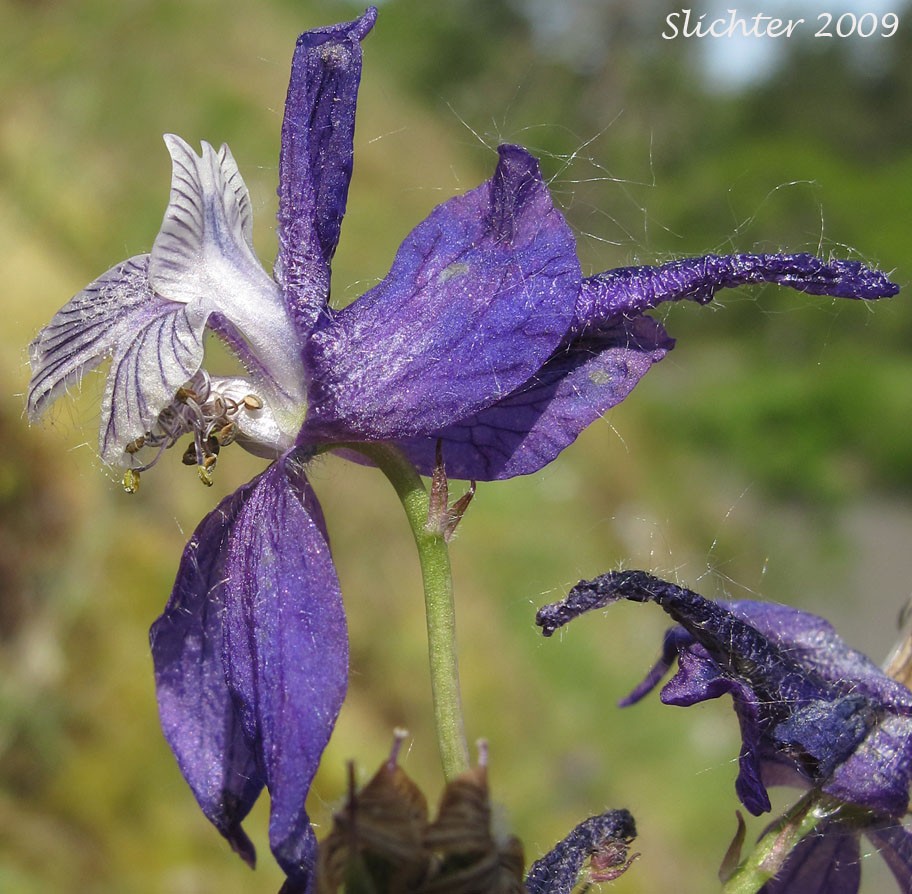Coastal larkspur
(Delphinium depauperatum)

Description
Delphinium decorum is a species of larkspur known by the common names coastal larkspur and yellowtinge larkspur. This wildflower is endemic to California, where it grows on the slopes of the coastal ranges in the San Francisco Bay Area and north. It grows an erect stem which approaches half a meter in height at maximum. The leaves, which are divided into a number of narrow lobes, are mostly located about the base of the plant. The spindly stem above bears two to twenty widely spaced flowers. Each flower is carried on a pedicel several centimeters long. The five long, flat sepals are extended to give the face of the flower a star shape, and they are usually deep blue to purple. The petals are similar in color, except the top two may be lighter to almost white. The spur is very thin and may be nearly two centimeters long. Delphinium is a genus of about 300 species of perennial flowering plants in the family Ranunculaceae, native throughout the Northern Hemisphere and also on the high mountains of tropical Africa. The genus was erected by Carl Linnaeus. All members of the genus Delphinium are toxic to humans and livestock. The common name larkspur is shared between perennial Delphinium species and annual species of the genus Consolida. Molecular data show that Consolida, as well as another segregate genus, Aconitella, are both embedded in Delphinium. The genus name Delphinium derives from the Ancient Greek word δελφίνιον (delphínion) which means "dolphin", a name used in De Materia Medica for some kind of larkspur. Pedanius Dioscorides said the plant got its name because of its dolphin-shaped flowers. Species with short stems and few flowers such as Delphinium nuttallianum and Delphinium bicolor appear in habitats like prairies and the sagebrush steppe. Tall and robust species with many flowers, such as Delphinium occidentale, appear more often in forests. The leaves are deeply lobed with three to seven toothed, pointed lobes in a palmate shape. The main flowering stem is erect, and varies greatly in size between the species, from 10 centimetres in some alpine species, up to 2 m tall in the larger meadowland species. In June and July (Northern Hemisphere), the plant is topped with a raceme of many flowers, varying in colour from purple and blue, to red, yellow, or white. The flowers are bilaterally symmetrical and have many stamens.
Taxonomic tree:







